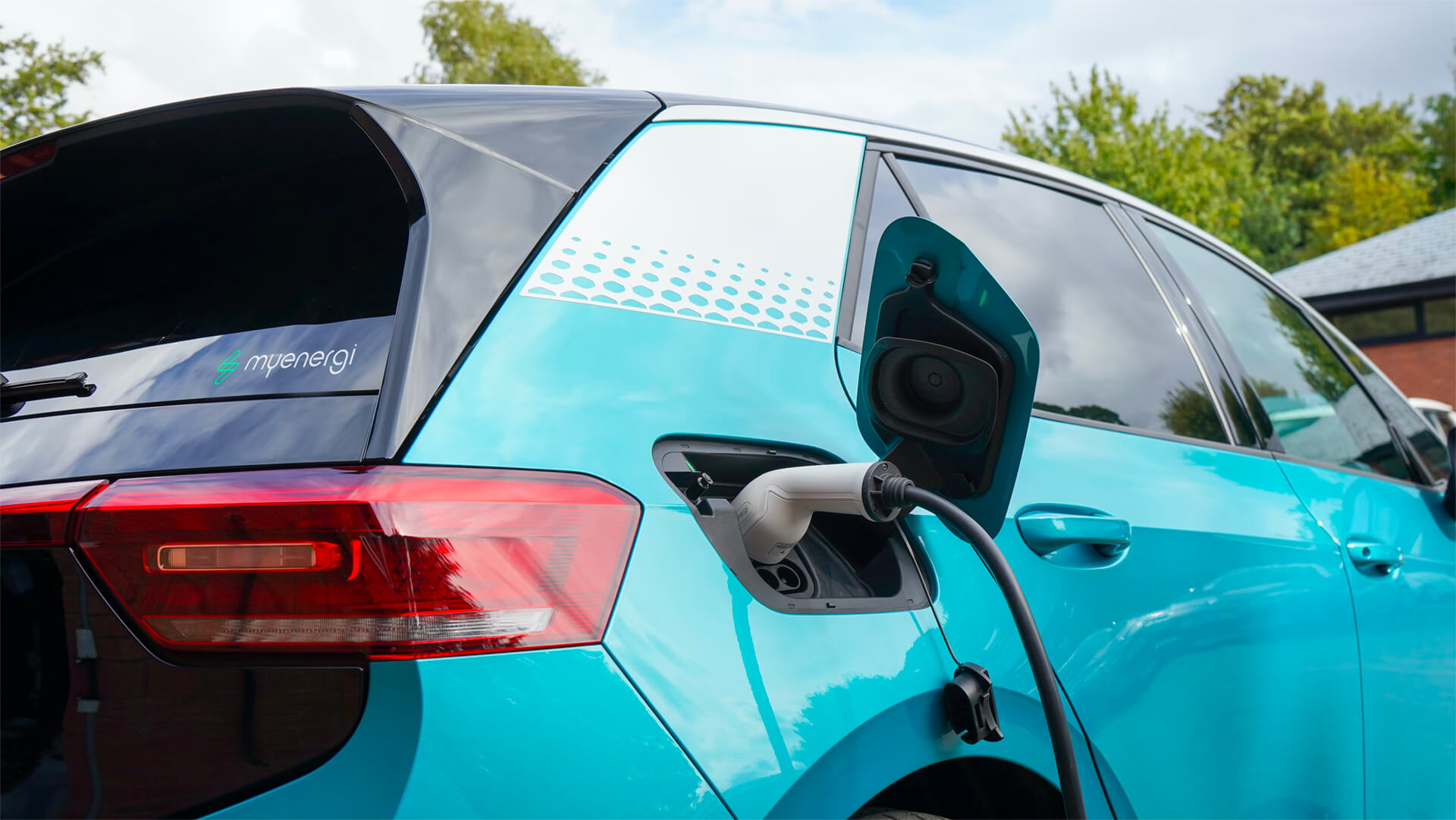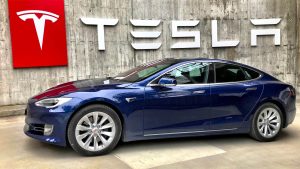When the major auto manufacturers start changing their EV plans, it’s probably a sign something’s not quite right. For all those who think they’re better than everyone else because they drive a Tesla, this video is for you…
Most people see electric vehicles and think it’s good, but remember to read that fine print. Given an increased reliance on Chinese manufacturing and issues with the energy mix and materials, those “planet-haters” driving internal combustion vehicles likely have a smaller carbon footprint than EV drivers.
Transitioning the world’s fleet of cars to EVs is just plain impractical unless we uncover a bottomless supply of materials and invent a new battery chemistry. Until that happens, we’ll continue to see EV sales fall and auto manufacturers lean away from EV plans.
In an ideal world, we would prioritize more practical green technologies instead of pissing away capital and resources on Elon’s new Model XYZ123.
Here at Zeihan On Geopolitics we select a single charity to sponsor. We have two criteria:
First, we look across the world and use our skill sets to identify where the needs are most acute. Second, we look for an institution with preexisting networks for both materials gathering and aid distribution. That way we know every cent of our donation is not simply going directly to where help is needed most, but our donations serve as a force multiplier for a system already in existence. Then we give what we can.
Today, our chosen charity is a group called Medshare, which provides emergency medical services to communities in need, with a very heavy emphasis on locations facing acute crises. Medshare operates right in the thick of it. Until future notice, every cent we earn from every book we sell in every format through every retailer is going to Medshare’s Ukraine fund.
And then there’s you.
Our newsletters and videologues are not only free, they will always be free. We also will never share your contact information with anyone. All we ask is that if you find one of our releases in any way useful, that you make a donation to Medshare. Over one third of Ukraine’s pre-war population has either been forced from their homes, kidnapped and shipped to Russia, or is trying to survive in occupied lands. This is our way to help who we can. Please, join us.
Transcript
Hey everybody. Peter Zeihan here coming to you from Colorado, where we’ve just had our first big winter storm and probably get a little bit more on top of the nine inches we got last night. Anyhow, the news of the moment is that a lot of major auto manufacturers are scaling down their plans to make the electric vehicles. Ford and GM have both suspended or canceled plans to build a couple of new facilities for Battery TV assembly.
No changes to their internal combustion engine vehicle plans. Tesla has indicated a significant drawdown in their global production capacity. And in fact, they’re saying they’re going to suspend and maybe even cancel the plans for the Gigafactory that they were going to be building in Mexico, although that’s very TBD. There are a lot of issues in play here. But let’s start with told yourselves, this is something that was never going to work.
From an environmental point of view, most EVs are best questionable. The data that says they’re slam dunk successes assumes that you’re building the EVs with a relatively clean energy mix and the recharging it with 100% green energy. And that happens exactly nowhere in the United States. The cleanest state is California. They are still 50% fossil fuel energy. And they lie about their statistics because they say they don’t know what the mix is for the power that they’re importing from the rest of the country, which is something like a third of their total demand.
And the stuff that comes from the Phenix area in Arizona to the L.A. Basin, which is something like ten gigawatts a day, which is more than most small countries, is 100% fossil fuel. But California claims to not know. More importantly, on the fabrication side, because there are so many more exotic materials and because energy process to make those materials is so much more energy intensive, all of this work is done in China and in most places it’s done with either soft coal or lignite.
So you’re talking about an order of magnitude more carbon generated just to make these things in the first place compared to an ice sheet. And that means that these things don’t break even on the carbon scale within a year. For most, you’re talking about approaching ten years or more. And that assumes you buy the Chinese data, which is right.
Okay. So that’s kind of number one. Number two is materials. These vehicles require an order of magnitude more stuff, more copper, more molybdenum, more more lithium. Obviously, graphite and the energy content required to put those in a process is where most of the energy cost comes from. But the more important thing is, is if we’re going to convert the world’s vehicle fleets to these things, there’s just not enough of the stuff on the planet.
I’m not saying that we can’t build a time, but that time is measured. In decades, humanity has never doubled the production of any industrial material at any time in history. Within a ten year period, if it was something we were using before and supposedly we need, you know, ten times as much nickel and all the rest, so the stuff just isn’t there.
So even if this was an environmental panacea, which it’s not, we would never be able to do it in a very short timeframe. You’re talking the century plus most likely third cost your typical even if you want to compare it to something that’s an internal combustion, it really depends upon the model. The cheapest ones are going to still cost about 10,000 more than their equivalent.
The more expensive ones can be upwards of 70,000. And so this is not a vehicle whose for most people and that’s before you consider little things like range anxiety and I’ve rented I think if it’s real is that there just aren’t enough charging stations. So in order to build out the electrical system that we need, in order to have a nationwide EV program, we need to basically increase low end the amount of electricity generation and throughput of our system by about half.
Now, there’s only been one year since the 1960s where the United States is ever increased the amount of electricity generated by more than 3%. And that was the year we came back from COVID. And so we didn’t have to install any new infrastructure for that. We would have to generate the sort of build up that we did back in the fifties when the country was electrifying for the first time.
And that’s going to require an order of magnitude more, almost two orders of make well, let’s call it 20 times more equipment when it comes to things like transformers and cables than we have done in 75 years. And if we started building out the facilities necessary to build those things today, they will not be ready at scale within four years.
And then you can begin the build out in four years and it’ll still take another decade. So no, no, no. But finally, I mean, the EV manufacturers really don’t pay any attention to any of this. The real issue is that sales are down for these reasons and more people just aren’t interested in EVs at the current time. They’re not as reliable.
They don’t have the range. People are a little nervous about the technology in general, and perhaps most importantly, if you’ve got a new style of EV that comes out, these are new technologies. Not a lot of people want to play today’s prices for yesterday’s EV. And so what we’re seeing is cars building up on the lots, not internal combustion cars.
Those lots are empty but EVs are building up on the lots and people just aren’t buying them without absolutely massive discounts. And the discounts are now to the point that the whole industry is no longer profitable, even with the subsidies that came in from the Inflation Reduction Act. Ultimately, if people don’t want them, these are not going to be sold.
And so we have now converted 1% of the American vehicle fleet to EVs, and it looks like we may be very close to the peak, but for me, a green who can do math, this couldn’t come soon enough. We have limited capital, we have limited resources, we have limited material inputs and we have limited labor. And we really need to focus on the technologies of the green transition that work.
And this isn’t one of them.






